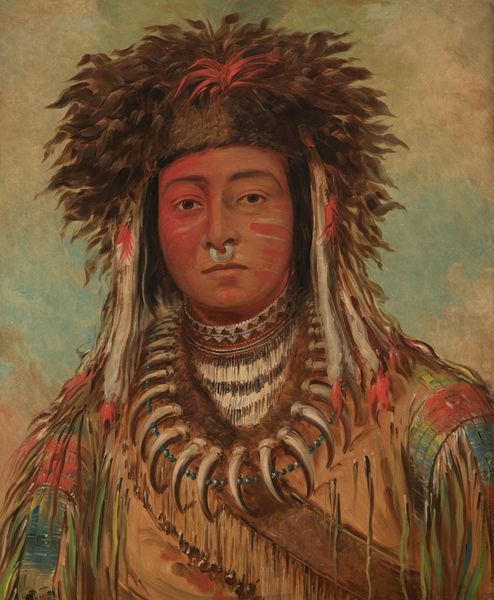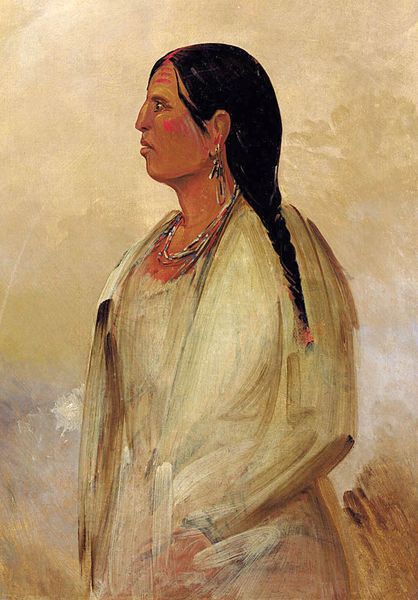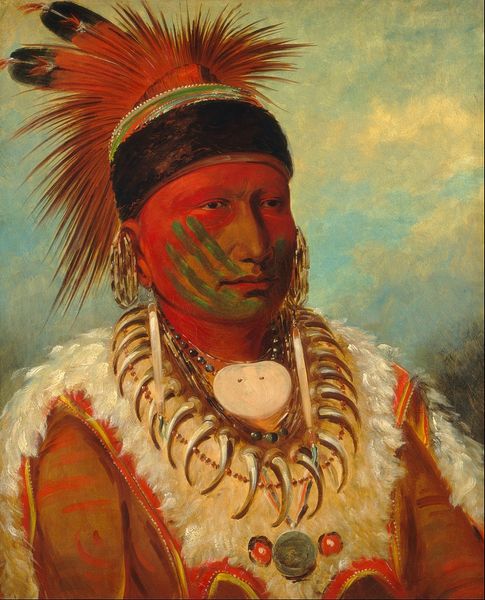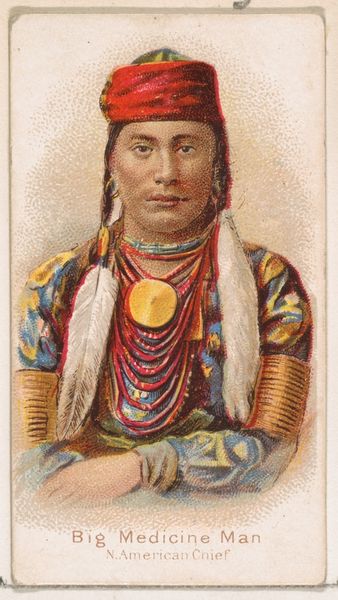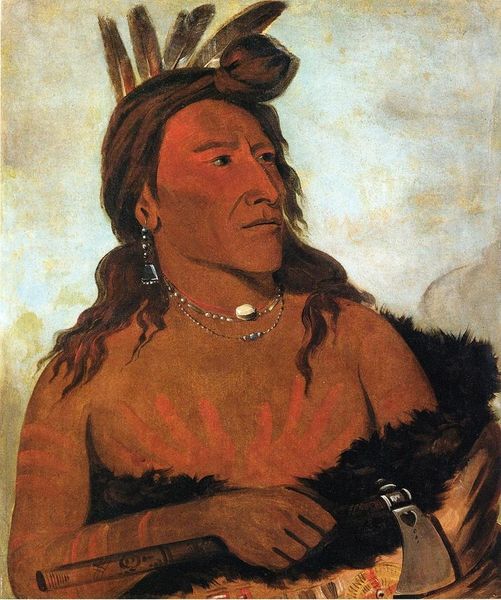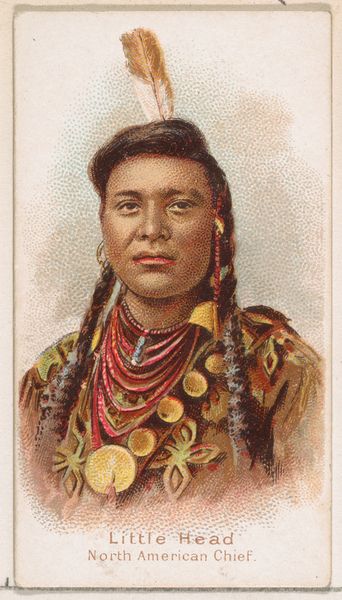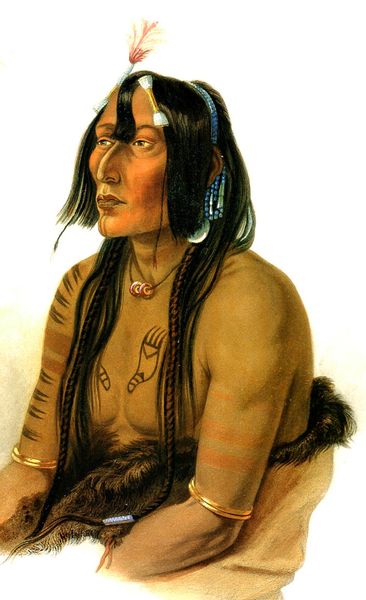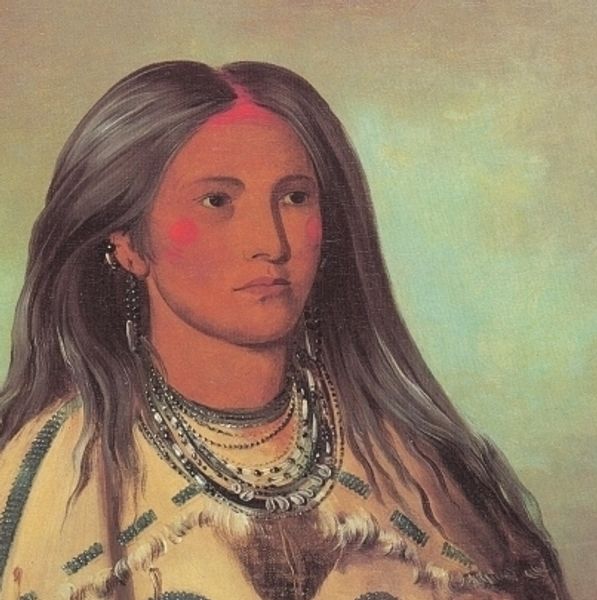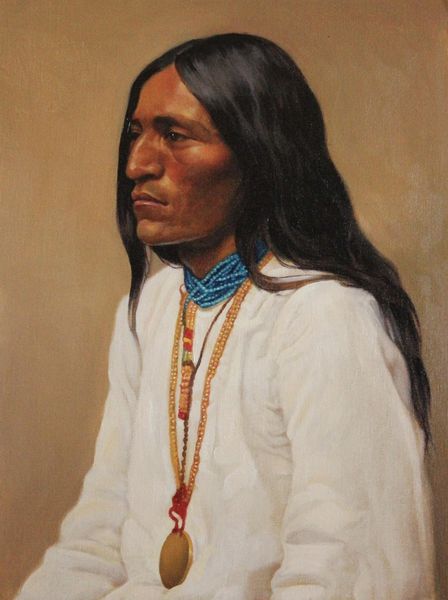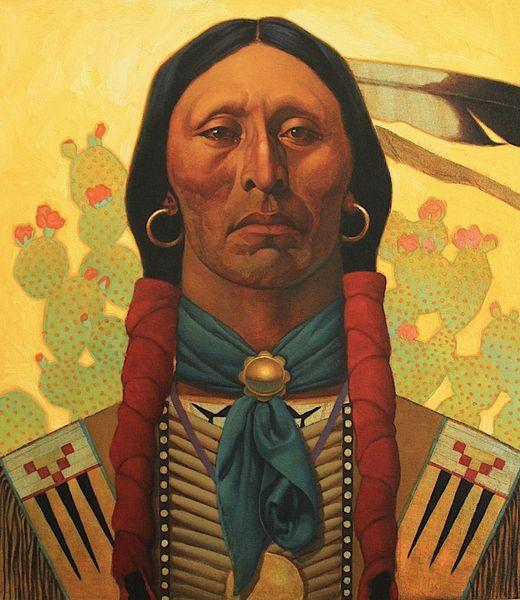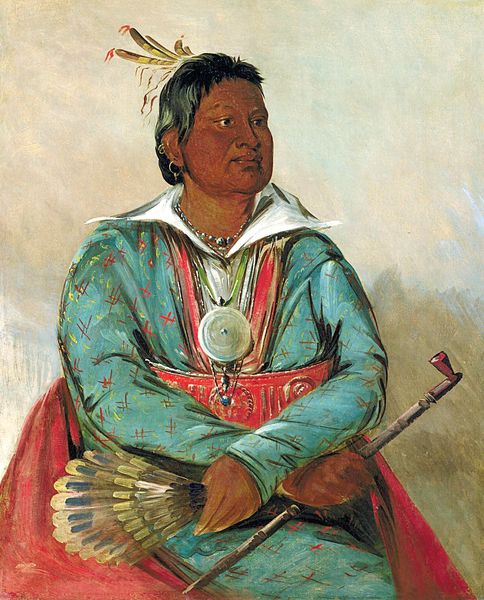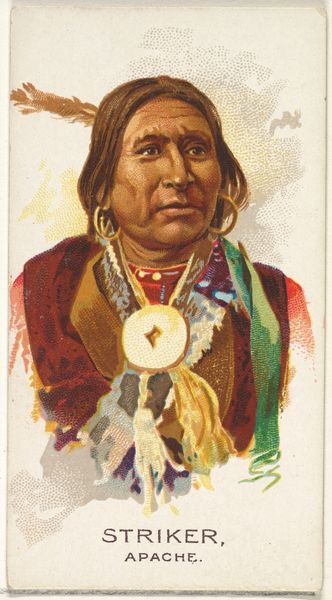
painting, oil-paint
#
portrait
#
painting
#
oil-paint
#
oil painting
#
romanticism
Copyright: Public domain
Curator: Before us hangs George Catlin's "Kei-a-gis-gis, a woman of the Plains Ojibwa," created in 1832. Catlin sought to document Native American life, and this portrait offers a glimpse into a specific individual. Editor: My immediate response is warmth. Despite the obviously constructed nature of the painting, there is a captivating tenderness radiating from her expression. And the soft pastel background seems to cradle her image with gentleness. Curator: I appreciate that initial read. We have to consider how Catlin, as a white American man, inevitably filtered his understanding through his own biases and the colonial gaze of the era. Even with the best intentions, there's an inherent power dynamic. Editor: Absolutely, we have to acknowledge that filter. Still, her adornments are intriguing. What can we infer about their symbolic meaning within her culture? Curator: The beads, the patterns on her dress... Catlin’s work offers a superficial record, but to understand the deeper significance, we need to turn to Indigenous voices and perspectives, both historical and contemporary. These pieces hold ancestral and personal stories. Editor: I see what you mean. Notice the star motif on her shoulder, a radiant burst of color. Stars often signify guidance or a divine connection. I wonder if Catlin, consciously or not, was tapping into this visual language. Curator: It is also possible Catlin assigned his own meanings, as so many Western artists did in portraying Native Americans, or worse, exoticizing their sitters. Context is everything when considering questions of representation. Who has the power to create the narrative, and whose voice is centered? Editor: So, by approaching this painting, are we invited to engage in active listening? A willingness to deconstruct not only the artist’s intentions but also our own preconceptions when we come face-to-face with it? Curator: Precisely. A work like this can be a site of critical engagement, prompting conversations around cultural representation, historical accuracy, and the complexities of identity. Editor: This brief encounter truly shifted my perspective and emphasized the importance of acknowledging and exploring the nuanced historical context when considering portraiture of this era. Curator: Indeed. This portrait acts as a powerful reminder that every image is a product of its time, reflecting the societal forces and individual biases that shaped its creation.
Comments
No comments
Be the first to comment and join the conversation on the ultimate creative platform.
